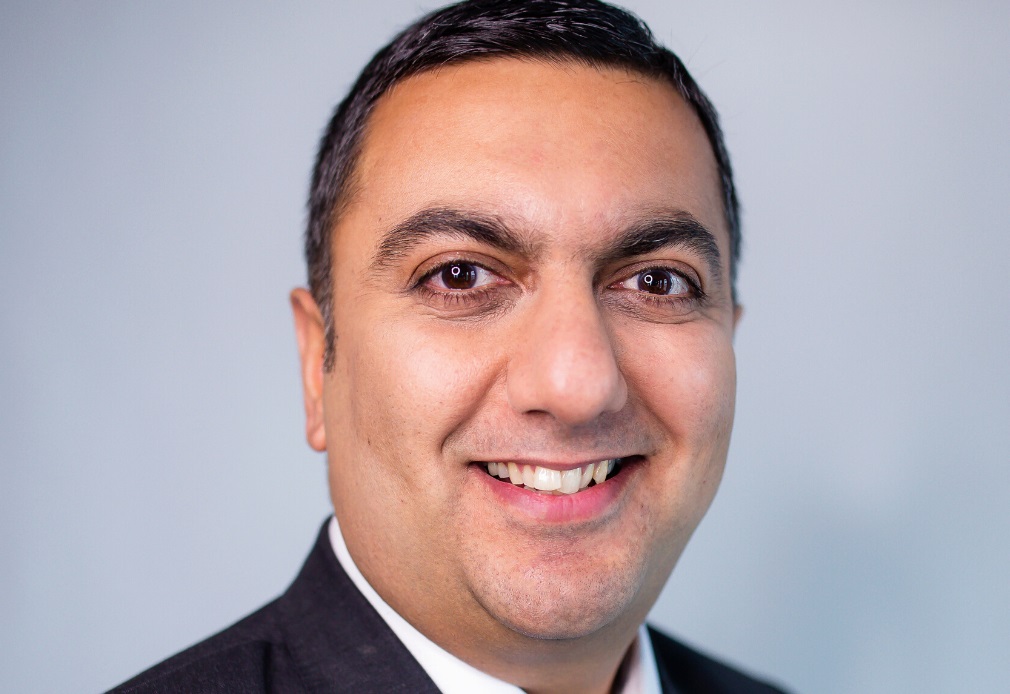
In the ITS sector it’s been quite a start to 2021, with a flurry of merger and acquisition (M&A) activity over the past couple of months.
The daddy of them so far is Teledyne’s $8bn splurge on Flir, followed by Cubic Corporation's $2.8bn sale to private equity companies and Verra Mobility buying Redflex for $113m.
Weighing in at $16m was Iteris’ purchase of software developer TrafficCast (last December) and International Road Dynamics (IRD) parent Quarterhill buying German fibre optic specialist Sensor Line for €3.8m.
“This deal adds fibre optic sensing technology and related applications to IRD’s portfolio of sensors and ITS solutions,” points out IRD President and CEO Rish Malhotra. “IRD, through our parent company Quarterhill is committed to growth and strategic acquisitions. And you're going to see a lot more of that from us going forward.”

Sensor Line makes fibre optic traffic sensors for road and rail – so what is IRD’s interest? “They have a solid footprint and they've been very focused in the toll market for the past several years,” Malhotra tells ITS International. “And recently they have also diversified into other enforcement and data collection applications like speed enforcement and bicycle detection, as well as applications in rail involving vibration analysis and flat wheel detection.”
So it was the company’s fibre optic technology which drew in IRD. “We are already looking at a number of new applications, which Sensor Line had not worked on previously,” Malhotra goes on. “It won't happen overnight, it will probably be a couple years before we will launch some of these new applications. But rather than us partnering with a university or finding fibre optic communication experts, we decided, ‘let's acquire a company that has done this for 25 years, who has extensive expertise, a strong brand and is a leader in this space’."
"Sensor Line has established suppliers, in-house expertise in manufacturing and assembly, long term customers and they are masters of their technology – let’s grow together, that was really our rationale.”
He likes established firms – not least to avoid the “crazy valuations” that can come with start-ups.
Obvious synergies
For Joe Bergera, CEO of Iteris, there are various financial criteria that must be met by any acquisition. But he is also interested in strategic value. “We were attracted, in particular, by the software product lines that TrafficCast had managed to commercialise and we felt that they had begun to develop a fair amount of momentum in both the public agency sector, but also in some interesting commercial markets.”
There are obvious synergies between the firms. “Like us, they are very focused on data aggregation, enrichment, analytics and visualisation,” Bergera continues. “And we also see the opportunity to essentially converge their software products and ours on a single platform.”

Iteris recently launched ClearMobility and sees TrafficCast - specifically its data management engine - becoming a critical part of that platform. “And in that sense, it will benefit all of our various software products and enrich our existing datasets, which we hope to then monetise further,” he suggests.
Another reason why we might be seeing acquisitions is that the fragmentation of the ITS market means scaling up opportunities can be a problem.
“ITS is a very niche business, but it's still very complex and broad,” says Malhotra. “Just look at us, we are global leaders in commercial vehicle operations, we provide tolling systems, we deliver solutions for traffic management, incident detection, access control, there are so many segments that we deliver solutions to within this very niche industry.”
It’s entirely possible to do well, but you need focus in order to grow. “There are some very, very successful companies around the world,” he continues. “But, either because of not finding the right partnership or sales channels or not being in the right home, they haven't been able to scale. Some of them have been able to get into good geographic markets, but then they have limited applications.”
Bergera makes a similar argument. “Some segments are reasonably mature, but it's such a vast market with so many different segments, and many of those are immature and highly fragmented,” he begins.
Secular trends
“And so we would expect to see many years of continuing acquisition as these various segments continue to evolve. Also, new segments are being created in this market due to various factors, including profound secular trends that are beginning to reshape the industry.”
These trends include cloud adoption, connected and autonomous vehicles, and - notwithstanding Covid-19 – a focus on urbanisation and sustainability.
Therefore he sees acquisitions continuing indefinitely. “There's a lot of capital that's interested in the ITS space. That is a driver for various companies which see the ITS sector as a dynamic market - so there's a strategic interest in entering and building their position in that market. I think there'll be others that are probably going to try to get a foothold and grow their position. And then I think there's also a lot of professional investors - meaning venture capital and private equity - that also see interesting dynamics in the market. And so they'll be looking to deploy capital as well.”
Google parent Alphabet, Apple, Microsoft and Cisco are all involved in ITS now too. “Big tech is really interested and so that's going to pull a lot of capital into this market for the foreseeable future,” Bergera says. “I think it does suggest there will be consolidation and that has its pluses and minuses. On balance I think it's good for the market, and it is an indicator of health.”

Getting the money right is clearly vital. But a key thing both IRD and Iteris look for it cultural fit.
“It all starts with culture, it starts with a solid team,” says Malhotra.
Doug Groves, CFO of Iteris, adds: “And we look, obviously, for strong management teams as well, which was one of the things we like about TrafficCast. Businesses with a recurring revenue model is something that's important to us, as well as a technology content. Technology is the backbone of autonomous vehicles, Vehicle to Vehicle connectivity, or Vehicle to Infrastructure connectivity - all those emerging trends.”
Size is also a consideration. “We're still a relatively small company, so we don't have a real big wallet,” says Groves. “And the business has to be creative to our earnings after one year of ownership, which can include the synergies that we find as part of the acquisition.”
Which brings us back to the latent potential of the ITS sector.
Investment spending
“ITS has been one of the last really big markets that has yet to really get the kind of penetration rate or the level of investment spending in information technology as we've seen in other industries,” Bergera muses.
“This may have started with manufacturing’s focus on MRP, and then banking with the focus on CRM, and then healthcare in the US. There's been a massive level of investment in IT which is starting to yield various operating efficiencies. And I think people look at ITS like that next big market that's going to do this. And that's really interesting.”
While there are a lot of potential acquisition targets, the sheer number can be a bit overwhelming. To narrow it down, Bergera is interested in “companies that have a really high technology content - software or other forms of technology, like IoT devices, for example”.

That’s not to say that you can't construct a rationale for other types of acquisitions, he adds. “But I think the higher the technology content, the more exposure to recurring revenue models, the easier it is to construct an investment case. TrafficCast was a perfect example: about 40% of the business is comprised of IoT devices, and 60% of software. So it really fit well with our strategic roadmap and checks all the other boxes that we mentioned.”
“With Sensor Line it was a very clear strategy,” says Malhotra. “We wanted to expand our global footprint in toll, provide solutions that deliver the highest accuracy for vehicle classification and revenue generation in tolling and take the fibre optic technology into different applications. And Sensor Line is very strong in this space. And the other aspect is, they're really in that space where they're helping governments and concessionaires generate revenue, which is going to be a key driver over the next few years.”
Infrastructure spending stimulus is a common theme in ITS, he thinks. “It’s a worldwide phenomenon. There’s no country which hasn't been affected through Covid. Most countries are looking at stimulating their economies through infrastructure spending, that's going to be a commonality – and that reaffirms the space that we're in, and it's a great time to be a leader in delivering innovative ITS solutions.”
Consolidation candidates
Malhotra thinks technologies in enforcement and smart cities are likely candidates for consolidation but he says companies must be mindful of international differences. “Europe saw a lot more of bicycle and pedestrian detection interest for smart city solutions through the pandemic, perhaps less so some other regions. Asia has been focused more from an IoT [Internet of Things] perspective, and consolidation from that angle.”
Smart cities have to be approached from the bottom up, he insists. “This means you can only do that through collaboration with others, joint ventures, acquisitions. Some companies have tried to develop a top-down platform, but I haven't seen success yet.”
For all the complications, Malhotra is clear that if ITS companies worldwide are potentially looking for an exit, then IRD could be interested in talking to them. “There are many technologies out there that I am absolutely looking at us acquiring, especially companies with a focus in delivering solutions via software and analytics,” he confirms. “What I'm noticing in talking to many of these founder-owner operators is they have gone through the pains of 2008-09 and then it took them a good decade to get their business back up to normal levels and grow. And now some, who may be close to wanting to retire in the next few years are wondering if they have another decade in them to get their business back up given the impact from Covid.”
So there is a lot of potential out there, but it takes work. Bergera puts it in a slightly more colourful way. He agrees that it makes sense to look at M&A as a ‘continuous process’.
“We're very focused on increasing our scale of operation and M&A is a big part of that,” he says. “Because of the market dynamics, we think it makes sense in terms of creating investor value. So it’s definitely something that we'll continue to focus on – but it's not like a mad dash where we feel like there's a six-month window, and we've got to pick up as many assets as we can before this window closes. That's not the way that we look at it.”
On the basis that Iteris is “always trying to identify new candidates”, there might be up to 50 companies it is considering at any one time. “There may be a couple that are potentially actionable and require more intensive engagement,” he says. “And there may be a couple of those a year where we'll get into some sort of formal due diligence. Out of all that activity, our goal is to do one acquisition every 12 to 18 months.”
That’s quite a bit of effort, he smiles. “So you’ve got to dance with a lot of people before you get engaged.”











